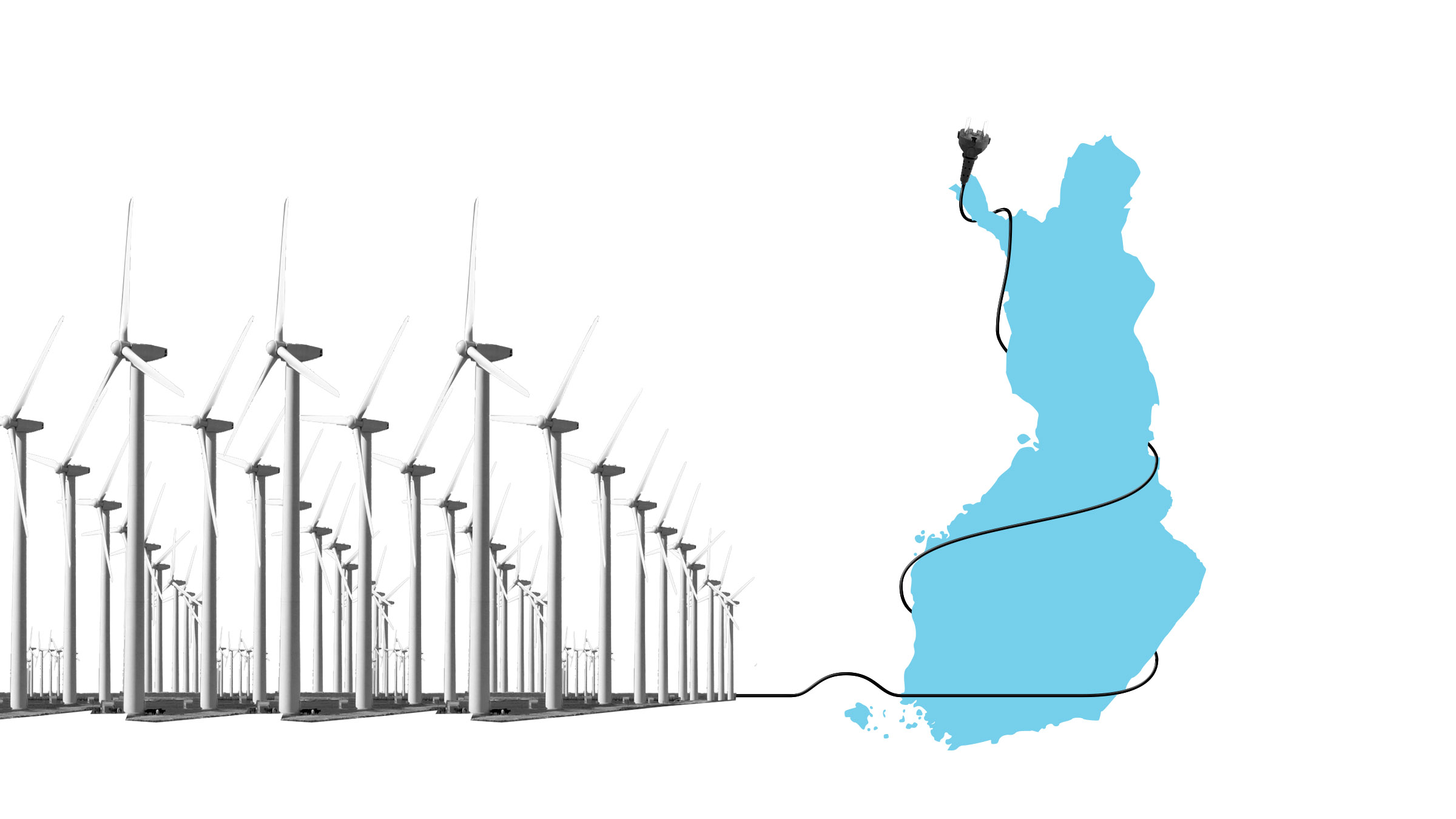Finland seeks carbon neutrality by 2035 and carbon negativity soon after that, in line with Prime Minister Sanna Marin’s Government Programme. Enabling cost-efficient electrification in Finland, an extensive study published by Sitra on 28 September, estimates that Finland can achieve its climate targets within the required timeframe.
In practice, this means replacing fossil fuels in industry, transport and heating with zero-emission electricity.
“The study shows that the change can be achieved with foreseeable technology, without overoptimistic assumptions about energy efficiency improvements and without a permanent increase in the use of wood and other biomass,” says Project Manager Gerald Aue at the consulting company Compass Lexecon, who led the modelling work.
Not everything can be replaced with electricity. But in the chemical industry, for example, cleanly produced hydrogen or sustainable biomass can be used instead of fossil raw materials.
The study was conducted by an international working group consisting of modellers and consultants from the Compass Lexecon and Enerdata consultancies and researchers from Lappeenranta-Lahti University of Technology. The study is based on the modelling of the energy system and the electricity market and interviews and workshops with a large group of experts.
A lot of new electricity generation is needed
The study estimates that extensive electrification of the Finnish economy would increase the demand for electricity by more than 20 per cent by 2035. By 2050, Finland’s annual electricity consumption would double from the current level to nearly 170 terawatt hours (TWh).
To meet the rise in consumption, Finland’s electricity generation capacity would need to more than triple from the current level of about 20 gigawatts to more than 70 gigawatts by 2050. In the main scenario, most of the new generation would be onshore wind power, which is a cheaper way to produce electricity than other zero-emission generation technologies.
The share of onshore wind power in Finland’s electricity generation would rise up to more than 70 per cent by 2050, up from about 10 per cent in 2020. In Denmark, for example, wind power already accounts for more than half of electricity generation.
Zero emissions require major investments
The study emphasises that wind power generation, which varies according to the weather, needs to be supported by consumption flexibility, energy storage, other flexible forms of electricity generation and good transmission connections within Finland and to neighbouring countries.
In the coming decades, this would require major investments in electricity generation and storage, and considerable additional investments in the transmission grid, serving as the backbone of the Finnish electricity system, and in cross-border transmission connections. For electricity distribution networks closer to consumers, no significant additional investments would be needed on top of the existing plans.
The study also looked into how the extensive use of hydrogen would affect the Finnish energy system. Modelling shows that abundant use of hydrogen would reduce the need for biomass and batteries, but at the same time electricity consumption would further increase, by 20 TWh by 2050.
Conversely, the study shows that in scenarios restricting the onshore wind build-up, more nuclear and offshore wind generation, batteries and imported electricity would be needed. And if demand response could not be fully implemented, more electricity storage and generation capacities would be needed to cover storage losses. These scenarios would lead to an increase in costs and required investments.
Decision-makers need to have a clear outlook of the future
The study is timely as the government is currently updating Finland’s climate and energy strategy. The main thing is to ensure that industry facing major investments has a stable operating environment, sufficient incentives for electrifying its processes and replacing fossil raw materials and support for developing and testing new solutions.
The study points out the importance of hydrogen and derived fuels for achieving the Finnish decarbonisation targets. Finland should establish a clear picture of how the transmission infrastructure required by clean hydrogen will be realised. Also, there is a need to incentivise cleanly produced hydrogen and its derivatives.
“To make the electrification of the energy system possible, the necessary prerequisites must be in order. Now decision-makers need to have a clear outlook of the future,” stresses Sitra’s Project Director Janne Peljo.
Join us on Tuesday, 28 September, to hear and discuss the results of the report at the publication event. The event will take place from 1:30 to 3:00 p.m Helsinki time. Registration is open until the start of the event on Lyyti website.

















Recommended
Have some more.